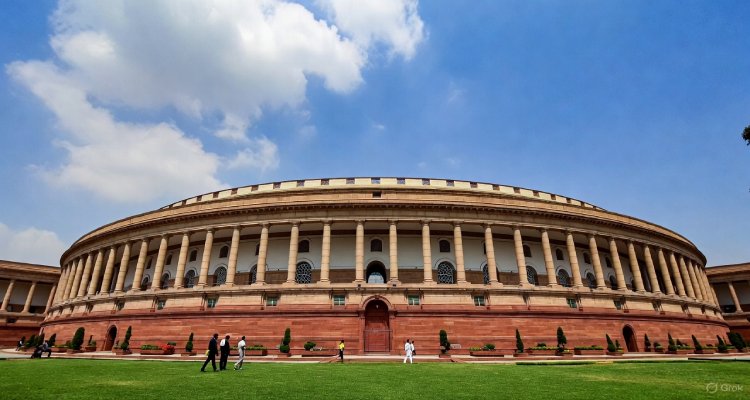India Takes Flight: Now the World’s Fifth Largest Aviation Market
India becomes the world’s fifth-largest aviation market in 2024, handling 241 million passengers. Growth in domestic travel and infrastructure plays a key role.
Introduction: India’s Soaring New Altitude
In a landmark moment for global aviation, India has emerged as the world’s fifth-largest aviation market, handling a record 241 million air passengers in 2024. This major leap, revealed in the latest World Air Transport Statistics (WATS) report by the International Air Transport Association (IATA), marks India’s growing dominance in both domestic and international air travel.
With an 11.1% growth from the previous year and a robust domestic network driving demand, India is not only climbing the rankings but also reshaping how the world looks at air mobility across South Asia.
Context: A Skyward Trajectory Years in the Making
India’s rise in the aviation sector didn’t happen overnight. Fueled by a burgeoning middle class, affordable airfare, and aggressive infrastructure expansion, the country has seen a steady surge in air travel over the last decade.
In 2023, India recorded 211 million air travelers. By 2024, that number had ballooned to 241 million, surpassing Spain and closing in on the UK (261 million). The rapid ascent reflects India’s strategic push to modernize airports, improve regional connectivity through the UDAN scheme, and attract private investment into civil aviation.
IATA, representing over 350 airlines globally, compiles its WATS data using metrics from more than 240 international carriers, offering a comprehensive overview of aviation performance by country and route.
Main Developments: Global Rankings and Domestic Demand
According to IATA’s WATS 2024 report, India now ranks fifth globally, behind:
- United States (876 million passengers)
- China (741 million passengers)
- United Kingdom (261 million passengers)
- Spain (241 million passengers)
India’s rise is primarily credited to the strength of its domestic aviation sector, particularly popular routes like Mumbai to Delhi, which ranked as the seventh busiest air route worldwide, with 5.9 million passengers flying between the two cities.
In the broader Asia-Pacific region, airport pairs continued to dominate, with South Korea’s Jeju-Seoul (CJU-GMP) route topping the global list at 13.2 million passengers.
Expert Insight: “India’s Growth Engine is Its Domestic Market”
Speaking to the aviation boom, Ravi Ranjan, a senior aviation analyst at CAPA India, noted:
“India’s aviation surge is the result of years of strategic policymaking and public-private collaboration. The domestic market is the growth engine, and as Tier-2 and Tier-3 cities get better airport access, we’ll see further exponential growth.”
Airlines like IndiGo, Air India, and Akasa Air have expanded aggressively, adding more narrow-body aircraft like the Airbus A320 and Boeing 737, two of the most flown aircraft in 2024, according to IATA’s ASKs (Available Seat Kilometers) metrics.
Premium Travel Grows, But Economy Still Rules the Sky
While economy class dominates passenger volume, premium international travel — business and first class — also saw impressive growth, increasing by 11.8% globally, slightly ahead of economy class at 11.5%.
In 2024, 116.9 million passengers traveled in premium cabins, accounting for 6% of total international traffic. Europe led the premium travel market, but the Middle East had the highest share of premium travelers as a percentage of total travelers (14.7%).
India, while primarily an economy-market by volume, has seen a rise in premium cabin occupancy, particularly among business travelers flying to the Gulf, Europe, and Southeast Asia.
Implications: Opportunities and Challenges Ahead
India’s aviation boom is a sign of broader economic dynamism, but it also presents challenges:
- Airport Congestion: Major airports like Delhi, Mumbai, and Bengaluru are nearing saturation.
- Infrastructure Demand: Expansion plans, including new airports in Jewar (Noida) and Navi Mumbai, are critical to sustaining growth.
- Workforce Readiness: A growing sector needs more trained pilots, cabin crew, and air traffic controllers.
- Environmental Pressure: India must also align growth with sustainability goals, investing in fuel-efficient aircraft and carbon offset programs.
Still, the opportunities are vast. With only a fraction of India’s population flying regularly, the untapped potential remains one of the highest in the world.
Conclusion: A Defining Milestone for India’s Global Presence
India’s ascent to the world’s fifth-largest aviation market is not just a statistic — it’s a symbol of how the nation is transforming, both economically and infrastructurally. As disposable incomes rise, Tier-2 cities get connected, and private players invest deeper, India is poised to become one of the top three aviation markets within the next decade.
This isn’t just about moving passengers; it’s about moving a nation forward.
Disclaimer: The information provided in this article is based on the IATA’s World Air Transport Statistics 2024 report and is intended for informational purposes only. The views and insights quoted are for illustrative use and do not reflect any personal or institutional endorsement.











